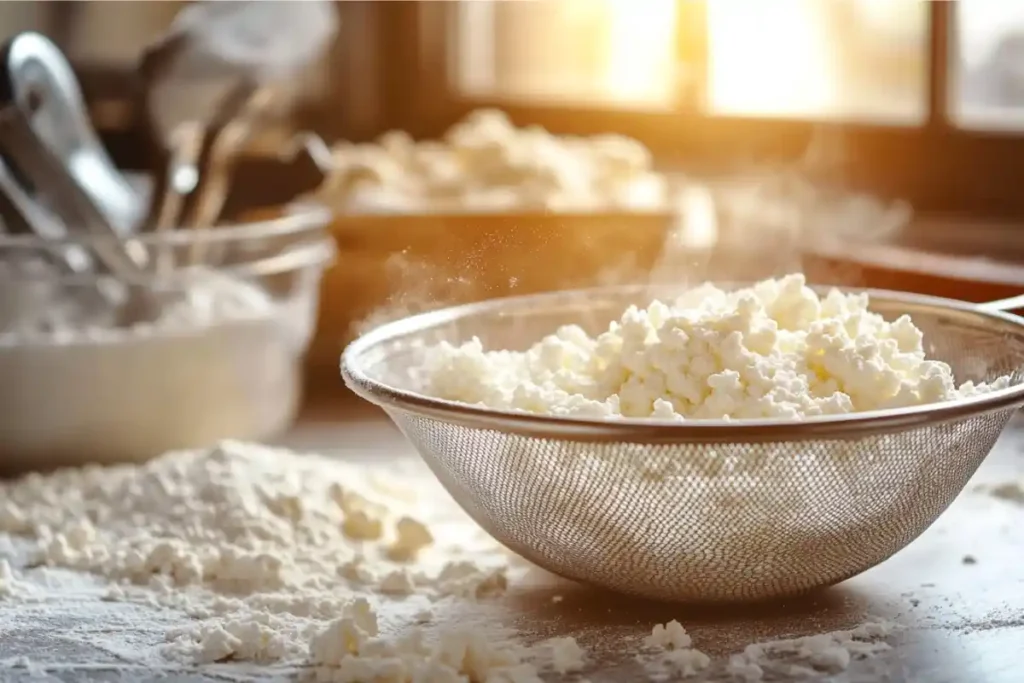Flatbread is a favorite in many kitchens because it’s simple to make and so versatile. But why is my cottage cheese flatbread soggy? If you’ve tried making it, you might have faced this common problem, and it can be frustrating. So, what causes this issue, and how can you fix it? In this guide, we’ll explore why it happens, the mistakes to avoid, and simple ways to keep your flatbread crisp. Plus, you’ll find tips on better ingredients, easy recipes, and storage tricks to get it just right every time.
Understanding the Problem
What Makes Flatbread Soggy?
Soggy flatbread is frustrating, but it’s a common issue. One big reason is too much moisture. Flatbread needs the right balance between wet and dry ingredients. But, when there’s too much moisture, it seeps into the dough and stops it from firming up. Also, if it’s not cooked enough or at the right temperature, the inside can stay gummy.
On top of that, outside factors like a humid kitchen or poor storage can make flatbread soggy. So, to make a firm and tasty flatbread, you need to figure out where the extra moisture is coming from.
Role of Cottage Cheese in Flatbread Texture
Cottage cheese adds great flavor and creaminess, but it comes with a challenge: moisture. Unlike firmer cheeses, cottage cheese has a lot of water, which can make your flatbread soggy if you don’t handle it carefully. If you use it straight from the container, the extra liquid can soak into the dough and make it hard for the bread to bake properly.
Even the type of cottage cheese matters. Low-fat versions usually have more water than full-fat ones, which can make the problem worse. But don’t worry! Once you understand how cottage cheese works, you can make small changes to your recipe and get flatbread that’s firm but not dry.
Common Mistakes in Cottage Cheese Flatbread Preparation
Excess Moisture from Cottage Cheese

One of the biggest mistakes is not draining the cottage cheese. It’s naturally watery, and if you skip draining it, your dough will end up too wet. This leads to soggy, gummy flatbread.
To avoid this, place the cheese in a fine-mesh strainer or use cheesecloth to drain it for at least 15 minutes. You can also press it gently to get out more liquid. Using dry, full-fat cottage cheese is a good choice because it has less water than low-fat versions.
Another tip is to measure your ingredients carefully. Too much cottage cheese or not enough flour can throw off the balance, leaving the dough sticky. If you’re looking for more ideas, check out this easy cottage cheese flatbread recipe.
Cooking Temperature and Time Errors
Even if your dough is perfect, cooking mistakes can ruin your flatbread. Baking at a low temperature might not dry out the moisture completely. On the other hand, baking too fast at a high temperature can leave the inside undercooked.
So, aim for an oven temperature of 375°F to 400°F. Watch the flatbread closely as it bakes—it should have a golden crust and feel firm. Also, make sure not to crowd the baking tray. This way, the heat will circulate evenly, and your flatbread will cook the right way.
Techniques to Avoid Sogginess
Prepping Ingredients for the Perfect Texture
Preparation is key to a flatbread that’s firm, chewy, and absolutely delicious. Beyond draining your cottage cheese, consider adjusting the recipe to include a mix of flours. Whole wheat or almond flour can add density and absorb some of the excess moisture from wet ingredients. Adding a tablespoon of cornstarch can also help bind the dough and create a sturdier texture.
Don’t forget to sift your dry ingredients! Lumps in the flour can create uneven patches in the dough, trapping moisture during baking. Assembling your dough quickly and avoiding overmixing will prevent gluten overdevelopment, which can lead to a gummy texture.
Cooking and Storage Hacks to Maintain Crispness

Cooking techniques play a major role in ensuring your flatbread isn’t soggy. Pre-baking the flatbread base for a few minutes before adding any toppings can help set the crust. This technique, often used in pizza making, creates a barrier that keeps moisture from seeping into the bread.
After baking, let the flatbread cool completely on a wire rack. Storing it immediately in an airtight container traps steam, which makes the bread lose its crispness. Instead, wrap it loosely in parchment paper before placing it in a container to maintain texture.
For longer storage, freeze flatbread in a single layer on a baking sheet. Once frozen, stack the pieces with parchment paper in between to keep them fresh. This will let you enjoy crisp flatbread anytime without worrying about sogginess.
Alternative Ingredients and Recipes
Substitutes for Cottage Cheese in Flatbread
If cottage cheese isn’t working for your flatbread—or you’re just looking to experiment—there are several great substitutes that can reduce moisture and enhance flavor. Yogurt is a popular option. Its creamy texture adds tanginess without the excess water found in cottage cheese. Greek yogurt works even better due to its thicker consistency.
Ricotta cheese is another excellent alternative. It’s smoother and less watery than cottage cheese, making it easier to mix into dough. Cream cheese, on the other hand, creates a rich and indulgent flavor while contributing minimal moisture. If you’re seeking plant-based options, tofu blended with a bit of lemon juice can replicate the texture and tang of cottage cheese.
Remember, when using substitutes, you may need to adjust the dry ingredients slightly to ensure the dough has the right consistency. A quick tip: always add liquids or wet ingredients gradually, so you don’t over-saturate the mixture.
For more recipe inspiration, take a look at this cottage cheese flatbread recipe that walks you through the preparation steps.
Flatbread Recipes for Beginners
For those new to baking, starting with a simple flatbread recipe can help you get a feel for the process. A basic flatbread recipe with cottage cheese (or its substitutes) typically requires only a few ingredients—flour, salt, baking powder, and your chosen dairy base.
Here’s a quick recipe idea:
- Mix 1 cup of flour with 1 tsp baking powder and a pinch of salt.
- Add ½ cup of well-drained cottage cheese or your substitute.
- Combine until the dough comes together, then knead gently.
- Roll out flat and bake at 375°F for 12–15 minutes.
Want to explore more variations? Check out the recipes on Recipes Revive for other ideas that pair beautifully with your flatbread.
FAQs Section
Why Does My Flatbread Turn Soggy After Cooking?
The most common reason flatbread turns soggy is excessive moisture in the dough, often from undrained cottage cheese or an imbalance between wet and dry ingredients. Cooking temperature and improper storage also play key roles. If you’ve wondered, Why is my cottage cheese flatbread soggy?, it’s likely due to one of these factors.
Can I Use Low-Fat Cottage Cheese for Flatbread?
Low-fat cottage cheese is often more watery than full-fat versions, making it harder to control moisture levels in your dough. If you must use it, be sure to drain it thoroughly. Alternatively, you might want to consider substitutes like ricotta or cream cheese for a more consistent result.
How Can I Store Flatbread Without Losing Texture?
To avoid sogginess, let your flatbread cool completely before storing it. Place it in an airtight container with parchment paper between layers. If you plan to keep it longer, freezing works best—just ensure the pieces are separated to prevent sticking.
What Are Some Quick Fixes for Soggy Flatbread?
If your flatbread ends up soggy, pop it back in the oven at 375°F for a few minutes to dry it out. Pre-baking the flatbread before adding toppings can also help prevent this issue in the future.
For more delicious flatbread ideas and baking tips, browse through the recipes at Recipes Revive. You’ll find easy-to-follow instructions to perfect your cooking!
Conclusion and Final Tips
Summing Up Key Points
Flatbread should be simple and satisfying, but sogginess can take away the joy of enjoying a freshly baked piece. Whether you’ve wondered, Why is my cottage cheese flatbread soggy?, or you’re searching for ways to improve your recipe, the solution lies in preparation and technique. From draining cottage cheese thoroughly to adjusting baking temperatures, every step plays a role in creating the perfect flatbread.
We’ve covered the common mistakes, alternative ingredients, and useful techniques to avoid sogginess. Plus, you now know how to store flatbread to keep it crispy and fresh. Remember, balancing moisture in the dough and paying attention to cooking time are the ultimate keys to success.
Inspiration for Experimenting with Flatbread Recipes
Flatbread is a blank canvas that you can customize endlessly. Try experimenting with different flours, cheeses, or plant-based options to find the combination that works for you. You might even create your signature recipe! If you’re looking for more creative ideas, consider browsing through the delightful recipes available on platforms like Recipes Revive for inspiration.
With these tips, you’re well on your way to becoming a flatbread pro. So, roll up your sleeves, and let the baking begin!
Troubleshooting Common Flatbread Issues
Identifying the Culprit Behind Soggy Flatbread
You’ve probably asked yourself, Why is my cottage cheese flatbread soggy? The answer often lies in simple preparation mistakes. One frequent issue is skipping the draining process for cottage cheese, which leads to excess moisture. Using overly wet ingredients or failing to measure them accurately can also cause problems. If your dough feels sticky or overly soft, it’s likely too wet.
Additionally, underbaking flatbread is another common mistake. Flatbread needs enough time in the oven to cook through and dry out excess moisture. Make sure your oven temperature is accurate by using an oven thermometer. Even the placement of your baking tray matters—position it in the center of the oven for even heat distribution.
Tips for Adjusting Recipes to Avoid Soggy Results
If sogginess persists, consider tweaking your recipe. Substitute cottage cheese with a drier option like ricotta or cream cheese. Adding a little extra flour can help absorb moisture, while a pinch of cornstarch can improve the dough’s structure. Pre-baking the dough lightly before adding any toppings is another effective method to keep your flatbread crisp.
For more troubleshooting tips, experiment with different techniques until you find what works best for your recipe. Baking is all about trial and error—don’t be afraid to adjust!
Encouraging Experimentation and Final Thoughts
Embrace Customization and Creativity
Flatbread is one of the most versatile dishes you can make. It’s not just a solution to the question, Why is my cottage cheese flatbread soggy?—it’s an opportunity to get creative in the kitchen. Don’t hesitate to experiment with new ingredients or flavors. Add herbs or spices to the dough for an aromatic twist, or try incorporating grated vegetables like zucchini or carrots for added texture.
If you’re venturing into the world of alternative flours, almond flour or chickpea flour can provide unique flavors and textures. Play around with baking temperatures and times to see what delivers the best results. Every adjustment teaches you something new!
Final Thoughts and Next Steps
The journey to mastering cottage cheese flatbread is rewarding. By understanding the common pitfalls and how to overcome them, you’ll transform soggy results into perfectly crisp creations. Use this guide as a roadmap, but don’t be afraid to deviate and make the recipe your own.
If you’re looking for more baking inspiration, check out other recipes on platforms like Recipes Revive. They’re packed with creative ideas to take your flatbread skills to the next level. Now, grab your apron and enjoy the process—your next flatbread will be your best one yet!

